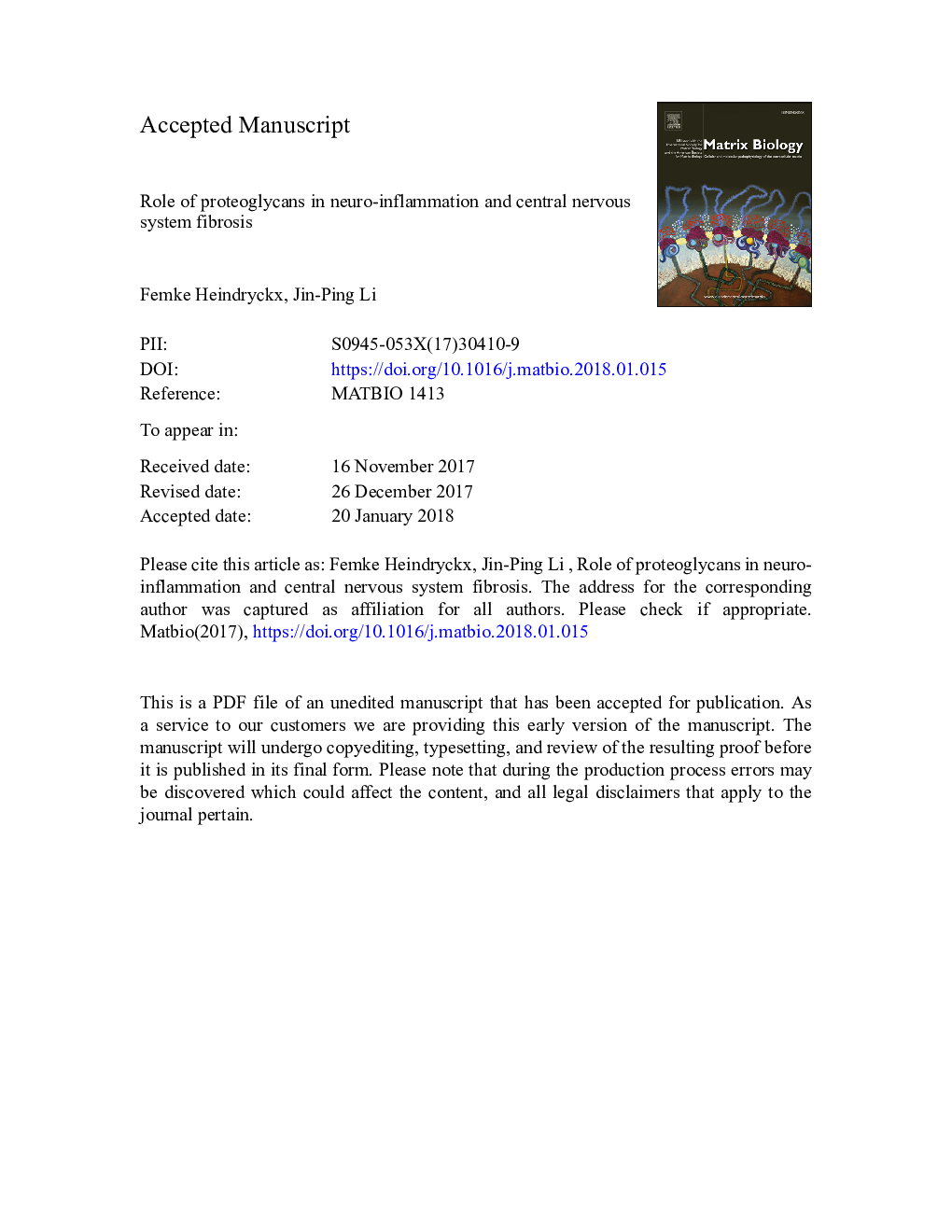| Article ID | Journal | Published Year | Pages | File Type |
|---|---|---|---|---|
| 8455054 | Matrix Biology | 2018 | 41 Pages |
Abstract
Fibrosis is defined as the thickening and scarring of connective tissue, usually as a consequence of tissue damage. The central nervous system (CNS) is special in the sense that fibrogenic cells are restricted to vascular and meningeal areas. Inflammation and the disruption of the blood-brain barrier can lead to the infiltration of fibroblasts and trigger fibrotic response. While the initial function of the fibrotic tissue is to restore the blood-brain barrier and to limit the site of injury, it also demolishes the structure of extracellular matrix and impedes the healing process by producing inhibitory molecules and forming a physical and biochemical barrier that prevents axon regeneration. As a major constituent in the extracellular matrix, proteoglycans participate in the neuro-inflammation, modulating the fibrotic process. In this review, we will discuss the pathophysiology of fibrosis during acute injuries of the CNS, as well as during chronic neurodegenerative conditions such as Alzheimer's disease, Parkinson's disease, multiple sclerosis and age-related neurodegeneration with focus on the functional roles of proteoglycans.
Keywords
ECMAβPPCSPGGAGTGFEAECTGFproteoglycansFGFHSPGTMEAβcathDKSPGGFAPexperimental autoimmune encephalomyelitisNeuro-inflammationamyloid betaChoAlzheimer's diseaseNeurodegenerative diseasesParkinson's diseasetransforming growth factorChinese Hamster OvaryCNSBBBcentral nervous systemfibroblast growth factorFibrosiskeratan sulfate proteoglycanExtracellular matrixBlood-brain barrierMultiple sclerosiswild typeHeparan sulfateHeparan sulfate proteoglycanGlial fibrillary acidic proteinamyloid-β precursor proteincathepsin DChondroitin sulfatechondroitinase ABCGliosisGlycosaminoglycan
Related Topics
Life Sciences
Biochemistry, Genetics and Molecular Biology
Cancer Research
Authors
Femke Heindryckx, Jin-Ping Li,
